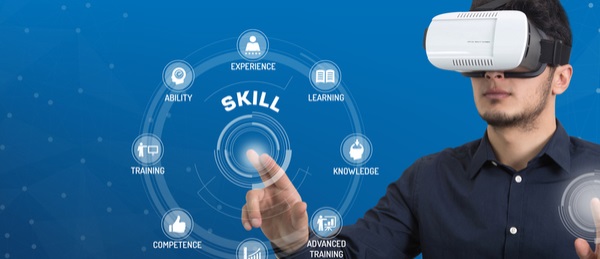posted on Mar 28, 2018 by Nikki Edwards

One of the things that was very clear from my visit to the UNLEASH HR industry event in London last week was that virtual reality and other interactive tech has arrived in the talent acquisition space in a big way. Here I look specifically at examples of how VR and gamification are having an impact on the candidate assessment process.
Candidate assessment is one of the hot talent acquisition topics for 2018. With the estimated cost of a bad hire being between $25k and $50k, organizations are increasingly looking at assessing candidates for cultural fit to minimize churn, and are turning to VR and other sophisticated assessment tools (incorporating performance analytics) to provide a unique, and often more enjoyable, approach to candidate assessment.
VR tech example: Assense from Actiview
Tech start-up Actiview has created Assense, a ‘fit prediction’ assessment platform, which is tailored for each customer. Customers can choose exactly what they want to assess, including:
- Personality traits
- Cognitive skills such as spatial awareness
- Work-related situations such as problem-solving, coping with change, outside the box thinking
- Integrity (credibility, loyalty, morality)
- Motivation.
Understanding the traits and skills of an organization’s top performing employees can be used as a benchmark to measure against, as well as wider market data from such assessments. For the candidate, it combines a VR tour of the organization they will potentially join (including the people they will meet), followed by a set of tasks/real-life simulations which are presented to the candidate.
Each move the candidate makes (based on what they see, point out, and say) is captured and analysed through deep learning and advanced sensory technology. The candidate is scored against correlations derived from organizational data; algorithms specific to the job, team or organization; and market adjustments. Whilst Assense is currently available as a standalone solution, the roadmap is for it to be integrated with an organization’s core HCM platform.
VR case study: pharmaceutical sector
The advantages that VR can bring to the workplace are illustrated by a case study from the pharmaceutical sector, where it is being used to initially train and later assess employees who are candidates for working on the manufacturing production line.
‘Line clearance’ in pharmaceutical manufacturing requires all traces of a previous production run to be removed before a new production run can begin. Traditionally, training involved the deliberate placement of wrong colour tablets, tablet debris, excess tablet foils, insufficient numbers of vials, etc. onto/under the production line in the hope that the trainee would correctly identify all faults/problems. This meant costly down-time (often 2-5 hours for training with line clearances either end of the training run) and was subject to biases by the trainer (e.g. setting up faults in similar positions on the production line).
The introduction of training using VR requires no down-time, enables three levels of training to be created (problem-spotting becoming getting progressively more difficult with each level), and enables ROI within four months. Lessons learned include:
- With initial reluctance by the workforce to try something new, the organization had to promote the advantages of moving to such technology
- Quality of VR headsets – a delay in playback caused nausea amongst participants, so top-quality headsets had to be sought to eliminate this effect
- The importance of optimizing realism (i.e. likeness to real production line conditions) to guarantee desired learning outcomes
- Striking the right balance between serious learning and fun.
Gamified candidate assessments
Gamified assessments are also now more common, using proven psychometric tools enhanced with game-style elements to make them more engaging. An example is cut-e’s smartPredict and chatAssess pre-hire assessment tools, which predict likely performance in job roles.
cut-e asked candidates to use and provide feedback on their mobile-enabled tests in order to understand what they liked and disliked. Likes included completing challenges, unlocking levels, receiving instant feedback, interactivity, fun assessments, and being taken seriously as a candidate. Dislikes included assessments being ‘too gamey’ (e.g. unprofessional/inappropriate and poor sound effects/visual effects).
smartPredict includes assessments for logical reasoning (switchChallenge), numeracy (digitChallenge), complex planning (motionChallenge) and executive attention (gridChallenge). The assessments are typically six minutes in length and measure different levels of capability.
chatAssess tests a candidate’s situational judgment, and has a 98% completion rate based on 35k assessments to date. Candidates receive incoming instant messages from different ‘colleagues’, with specific questions or requests for advice. In real-time, they select a text message response from predefined replies. chatAssess reacts to this and sends back another message from that colleague. Different colleagues will usually be facing different issues or challenges, and the candidate has to prioritize the various tasks and manage their commitments. chatAssess is used by cut-e’s customers to support early screening for graduate and apprentice recruitment.
Summary
During 2017, many talent acquisition professionals were sceptical about the value that VR and gamification could bring to the talent acquisition assessment space, and wanted to see how the market would evolve before committing to using the associated tools/tech.
With more providers having already launched VR and gamified candidate assessment platforms backed up with sophisticated psychometric analytics, talent acquisition professionals need to start embracing such tools/tech in 2018 to avoid being left behind.
